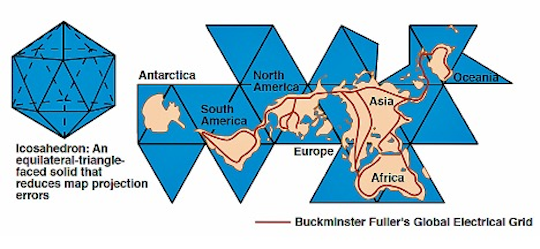Energy, Money, and World Peace
Posted August 17, 2022
Chris Campbell
“The Network began slipping into the mainstream when nations capitulated on trying to restore the past — by either Building Back Better or Making XYZ Great Again — paving the way for something new and unexpected to emerge.”
Yesterday, we outlined a hypothetical future scenario called “The Network.”
In the year 2050, humanity had long turned away from Bronze Age command-and-control politicking…
And turned toward an open, free, and dynamic marketplace of ideas, beginning a new age of peace and prosperity.
This is a “protopian” ideation of the future. Protopia means a gradual improvement of society over time with hiccups along the way, without ever reaching a “Goldilocks” utopian stability.
Unfortunately, it’s in short supply.
99% of all our current depictions of the future — especially involving technology — lean heavily toward dystopian.
Sure, The Network is fiction.
BUT, it’s grounded in three really big — and paradigm-shattering — ideas:
1.] Decentralized Science (DeSci) as a new way to leverage the world’s genius to solve problems.
2.] Energy as a global currency.
3.] The global deregulation and free trade of electricity around the world.
DeSci
For starters, DeSci already exists.
The Berkeley Open Infrastructure for Network Computing (BOINC), released in 2002, is an open-source software that enables researchers to tap into the massive processing resources of personal computers around the world.
Researchers have been using it successfully for almost three decades to make discoveries in mathematics, linguistics, medicine, molecular biology, environmental science, astrochemistry, and much more.
In 2021, as a distributed computing platform, BOINC brought together about 34,236 active participants employing 136,341 active computers (hosts) worldwide, processing daily on average 20.164 PetaFLOPS. If BOINC were a supercomputer, it would be the 21st largest in the world in terms of processing capacity. But it isn’t a supercomputer. It’s a free software anyone can run on their computers.
There was also the Folding at Home project, launched in October 2001, which, in 2020, also became one of the world’s fastest computing systems.
These two projects are the first iterations of “Web3,” a decentralized Internet where the inherent value is the processing power used to solve problems.
Crypto allows for individuals to capture the value they provide on top of this global network.
Bitcoin, which runs on artificial difficulty (Proof-of-Work), has an unintended positive consequence. Although the same amount of Bitcoin generated every single day is fixed, the amount of energy consumed to generate Bitcoin fluctuates daily. 99.9999% of the work done in Bitcoin’s proof-of-work system is discarded.
If you were to remove 99% of the computing power from the network, the artificial difficulty adapts.
In theory, projects like BOINC or Folding At Home could utilize up to 90% (or more) of Bitcoin’s processing power without compromising the security of the network.
Done right, things like DeSci could utilize Bitcoin’s miner farms, allowing miners to double dip:
Winning block rewards and earning income from providing computing power to The Network.
Bitcoin is already the most secure network in the world. This could also make Bitcoin the most powerful supercomputer in the world, too.
In a way, The Network already exists.
The Global Grid
The word “genius” is overused these days.
But there’s one man — Buckminster Fuller — who truly fits the bill.
In 1967, Fuller said:
“I'll talk about something that would be one of the realizations by 2018: a realistic—scientific accounting system—of what is wealth. Wealth isn't the gold of pirates—wealth is energy.”
Fuller believed this scientific accounting system of stored energy (which sounds a bit like Bitcoin) would be one huge step in making the world work for everyone.
After all, nations rise and fall on energy needs.
The inclination towards war drops when energy becomes cheap.
Fuller proposed that the global free trade of energy credits would establish a supply-demand equilibrium — creating fantastically cheap energy — that could revolutionize the world, freeing the world from the tension of energy scarcity.
That is what first inspired his famous Dymaxion Map.

Fuller’s vision was of a dynamic global grid of computing power, the sources of which, by design, were limited by the imagination. They can range from residential turbines in your neighbor Frank’s backyard to old school natural gas flares in West Siberia.
Naturally, people scoffed.
When he originally thought of this idea, we could only transmit energy about 350 miles, roughly the distance from Boston to Washington, D. C..
Any further would make transmission cost prohibitive.
Then, in the 1960s, that number changed to 1,500 miles.
Today, high voltage transmission is estimated to be cost-effective for more than 4,000 miles. (For reference, Seattle to Miami is about 3,400 miles.)
Brighter Than Ever
No. The Network isn’t real…
But, everything about The Network is possible.
The idea that energy can be used as a fundamental currency for the human race — and that it can be a force for world peace and prosperity — is an incredibly intriguing one.
And perhaps it’s not as far-fetched as it sounds.
